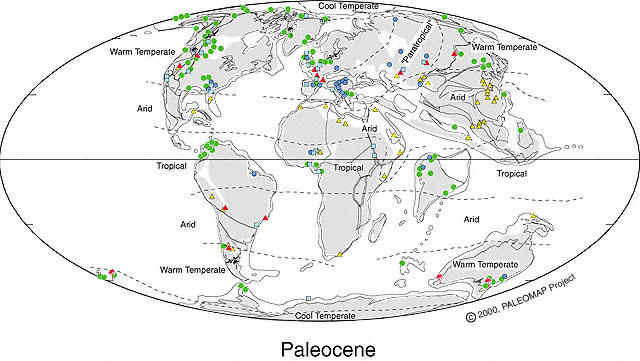
But it's purely symbolic, I'm sure:
On the eve the annual G8 Summit where NASA's Dr. James Hansen will announce that we've passed safe C02 levels (safe being maximum 350 ppm; we're now at 385 ppm), Hansen has penned a comprehensive letter (PDF) to Japanese Prime Minister Yasuo Fukuda, host of the G8 Summit, requesting his leadership in addressing his findings...

The more things change the more they stay the same. Except they aren't:
...The Paleocene-Eocene Thermal Maximum lasted around 20,000 years, and was superimposed on a 6 million year period of more gradual global warming[Zachos, J.C.; Dickens, G.R.; Zeebe, R.E. (2008). "An early Cenozoic perspective on greenhouse warming and carbon-cycle dynamics". Nature 451 (7176): 279–83. doi:10.1038/nature06588.], peaking later in the Eocene at the "Eocene climatic optimum". Other "hyperthermal" events can be recognised during this period of cooling, including the Elmo event (ETM2). During these events, of which the PETM was by far the most severe, around 1,500 to 2,000 gigatons of carbon were released into the ocean/atmosphere system over the course of 1,000 years. This rate of carbon addition almost equals the rate at which carbon is being released into the atmosphere today through anthropogenic activity.
The globe was subtly different during the Eocene. The Panama Isthmus did not yet connect North and South America, allowing circulation between the Pacific and Atlantic oceans. Further, the Drake Passage was shut, preventing the thermal isolation of Antarctica. This, combined with higher CO2 levels, meant that there were no significant ice sheets - the globe was essentially ice free.

So what kind of climate does this bring?
...The early Paleocene was cooler and dryer than the preceding Cretaceous, though temperatures rose sharply during the Paleocene–Eocene Thermal Maximum. The climate became warm and humid world-wide towards the Eocene boundary, with subtropical vegetation growing in Greenland and Patagonia, crocodiles swimming off the coast of Greenland, and early primates evolving in tropical palm forests of northern Wyoming. The Earth's poles were cool and temperate; North America, Europe, Australia and southern South America were warm and temperate; equatorial areas had tropical climates; and north and south of the equatorial areas, climates were hot and arid.
If you frankly didn't care what happened to half of humanity, if you had positioned your assets to survive all economic storms, and were in the position to profit tremendously from the opening of Canada, Siberia, and the Arctic to exploitation being the main exploiter, why, global warming is precisely what you'd want to do.
Just sayin'. I'm sure our Leaders would never do anything like that.


No comments:
Post a Comment